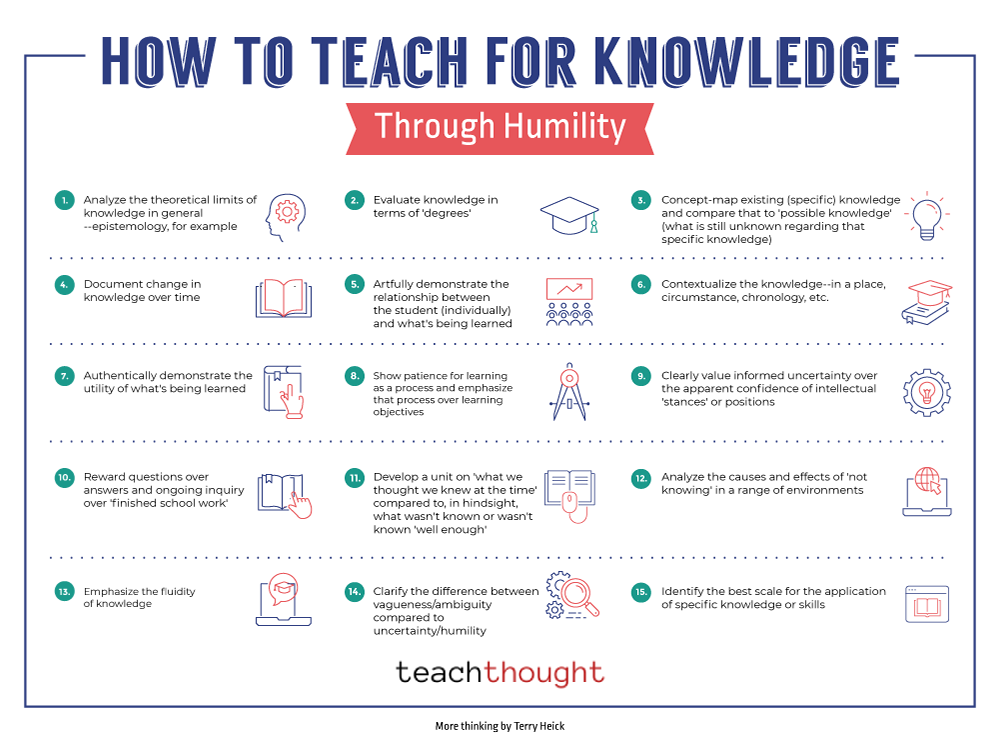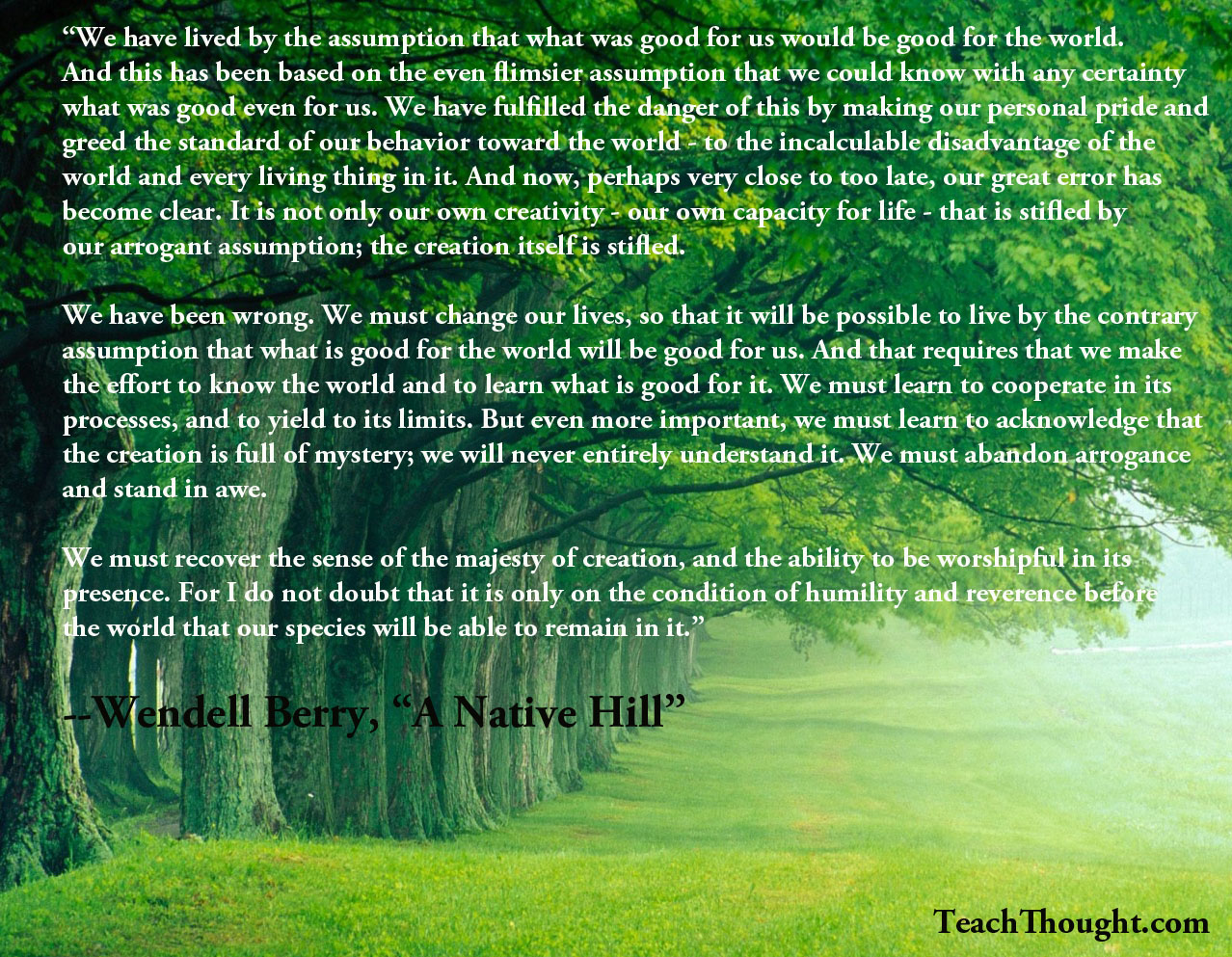

by Terry Heick
Humility is an interesting starting point for learning.
At a time in digital, social, chopped and constantly recirculated media, the challenge is no longer access but the quality of access – and the reflex and then judge uncertainty and “truth”.
Discernment.
On “Knowing”
There is a tempting and distorted feeling of “knowing” which can lead to a loss of reverence and even the right to “know things”. If nothing else, access to modern technology (in a large part of the world) has replaced subtlety with the show and the process by access.
A mind that is properly attentive is also correctly humble. In A native hillWendell Berry points to humility and limits. Starting in front of everything unknown can be overwhelming – or illuminating. How would that change the learning process to start with a tone of humility?
Humility is the heart of critical thinking. He says: “I don’t know enough to have an enlightened opinion” or “let’s learn to reduce uncertainty”.
Be aware of yourself in your own knowledge and the limits of this knowledge? To clarify what you can know and what can’t? To be able to match your understanding with an authentic need to know – a work that naturally strengthens critical thinking and a sustained investigation.
What it looks like in a class
- Analyze the limits of knowledge in simple terms (a simple introduction to epistemology).
- Evaluate knowledge in degrees (for example, some, probable, possible, improbable).
- Concept-Map which is currently understood about a specific subject and compare it to unanswered questions.
- Document how knowledge changes over time (personal and instant historical learning newspapers).
- Show how the perspective of each student shapes his relationship with what is learned.
- Contextualizing knowledge – place, circumstance, chronology, stakeholders.
- Demonstrate an authentic utility: where and how this knowledge is used outside the school.
- Show patience for learning as a process and highlight this process alongside the objectives.
- The value of clearly enlightened uncertainty about the confidence of rapid conclusions.
- Reward current questions and follow -up surveys more than “finished” answers.
- Create a unit on “what we thought we knew” compared to the programs of the hindsight that we missed.
- Analyze the causes and effects of “not knowing” in science, history, civic life or daily decisions.
- Highlight the fluid and evolutionary nature of knowledge.
- Differentiating the imprecision / ambiguity (lack of clarity) of uncertainty / humility (awareness of limits).
- Identify the best scale to apply specific knowledge or skills (individual, local, systemic).
Research note
Research shows that people who practice intellectual humility – being willing to admit what they do not know – are more open to learning and less likely to cling to a false certainty.
Source: Learey, Mr, Durbels, Diabbeb, KJ, Davisson, EK, and Al are old. (2017). Cognitive and interpersonal characteristics of intellectual humility. Bulletin of personality and social psychology, 43(6), 793–813.
Literary touchstone
Berry, W. (1969). “A native hill”, in The long -legged house. New York: Harcourt.
This idea may seem abstract and even out of words in increasingly “based on research” and “data -based” learning systems. But that is part of its value: it helps students to see the knowledge not as fixed, but as a life process, they can join care, evidence and humility.
Teaching knowledge, learning through humility





